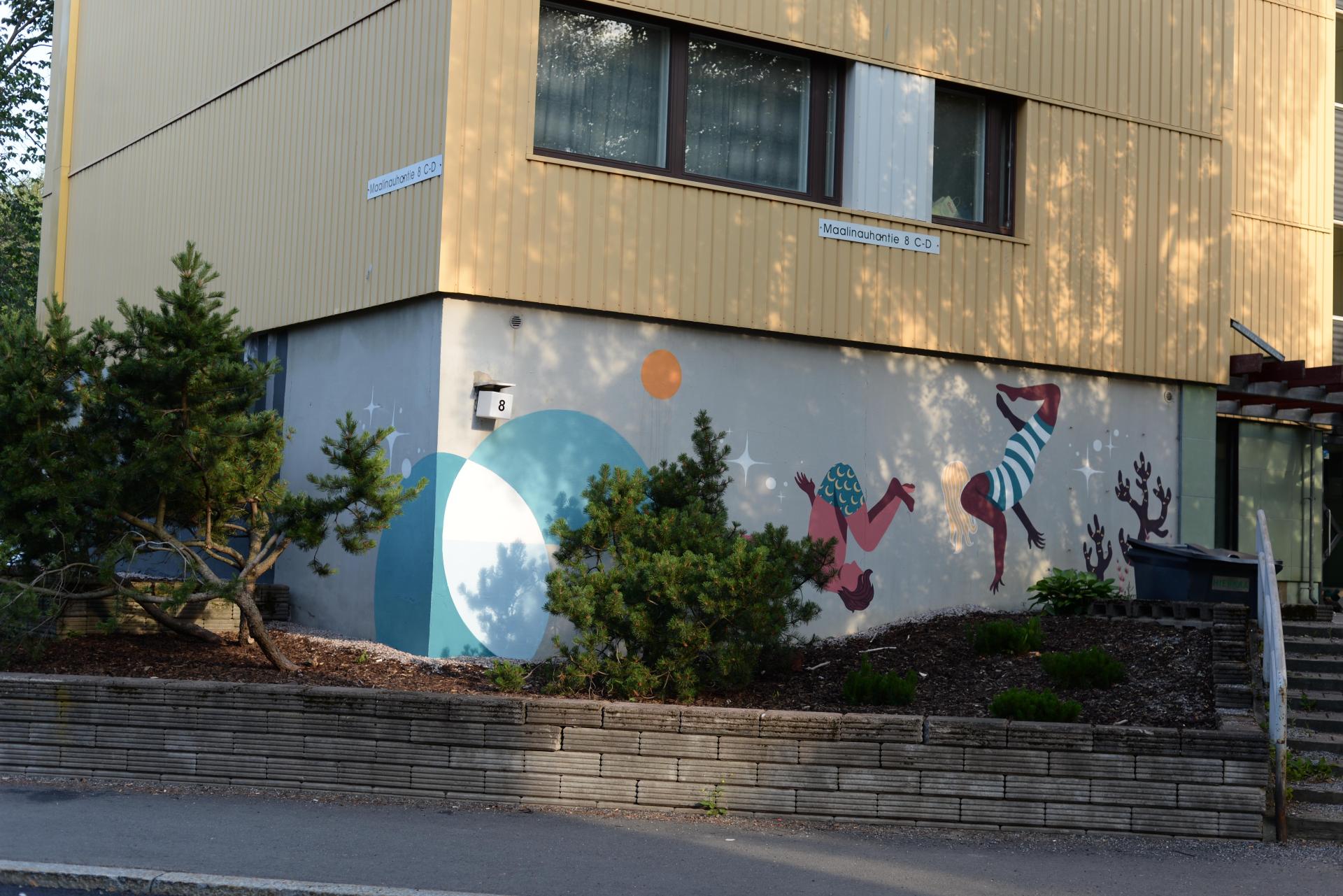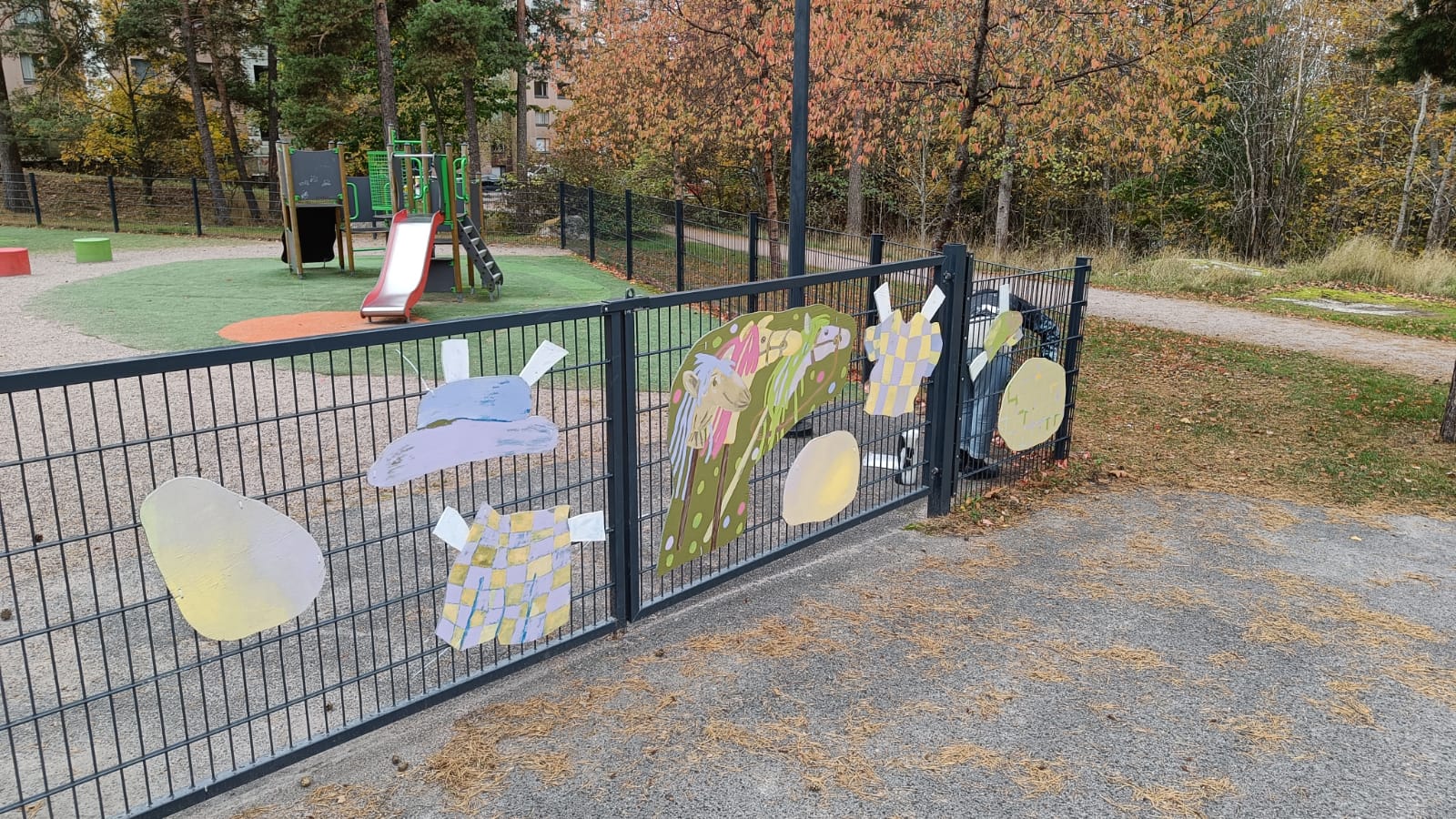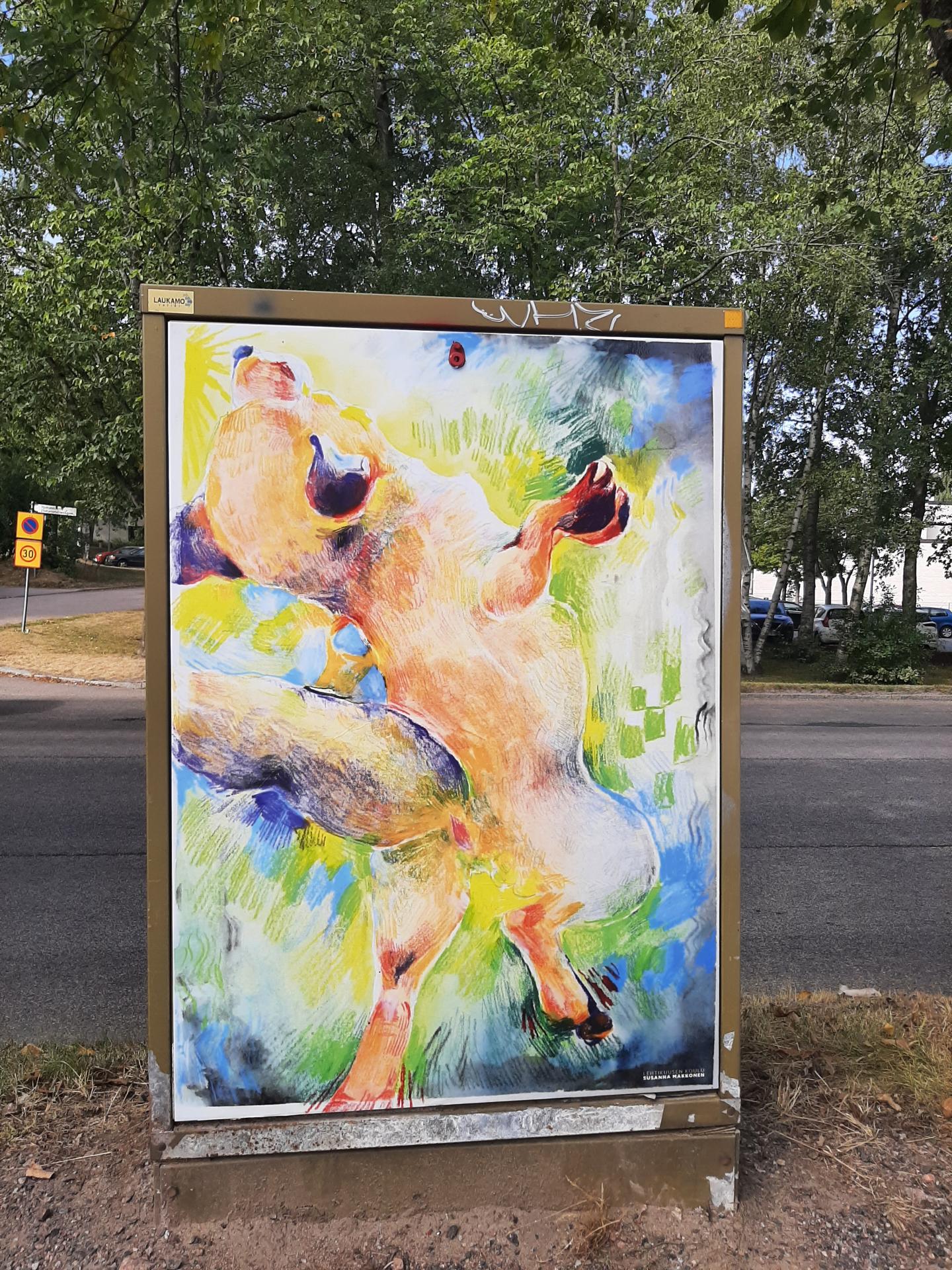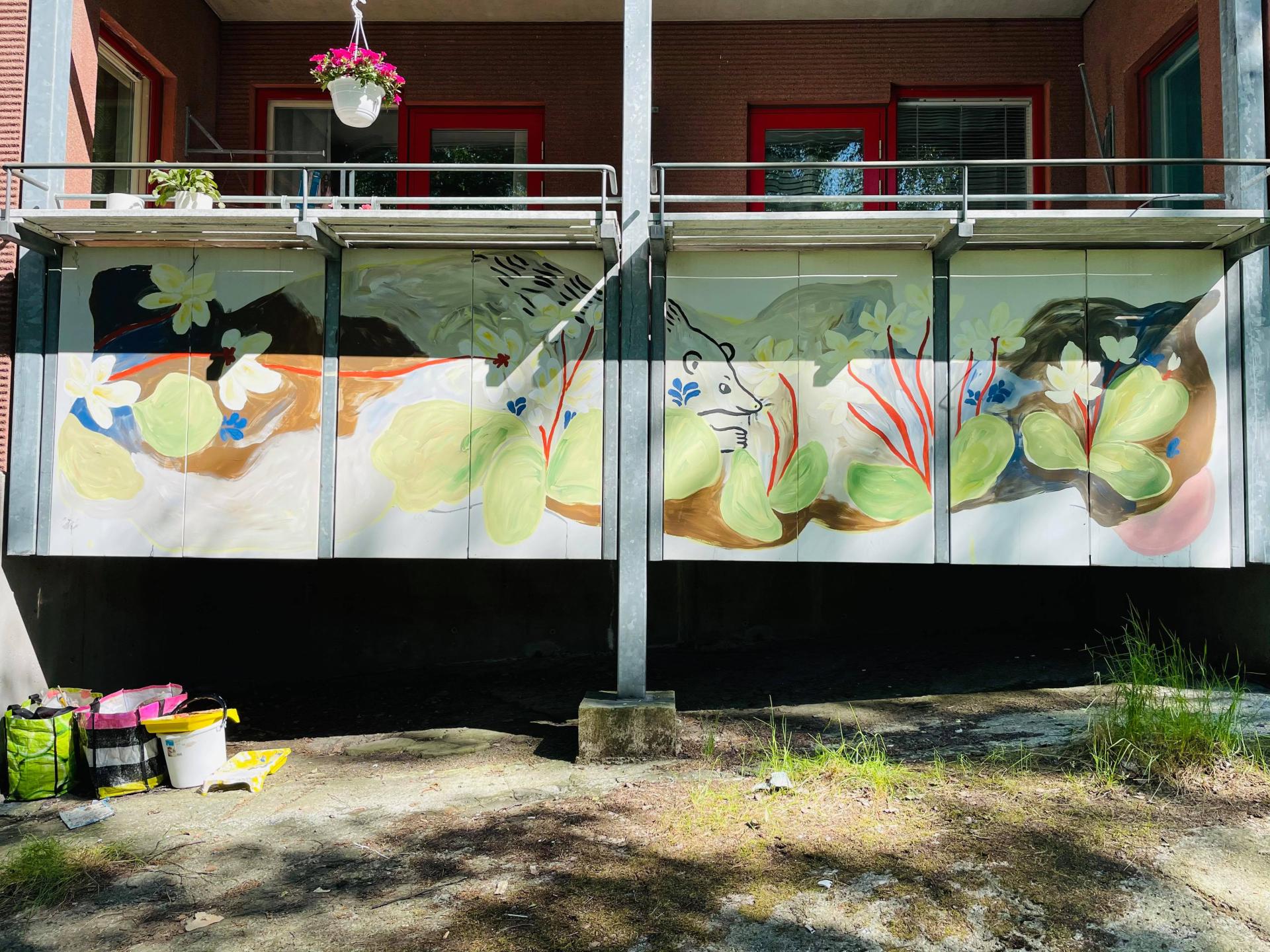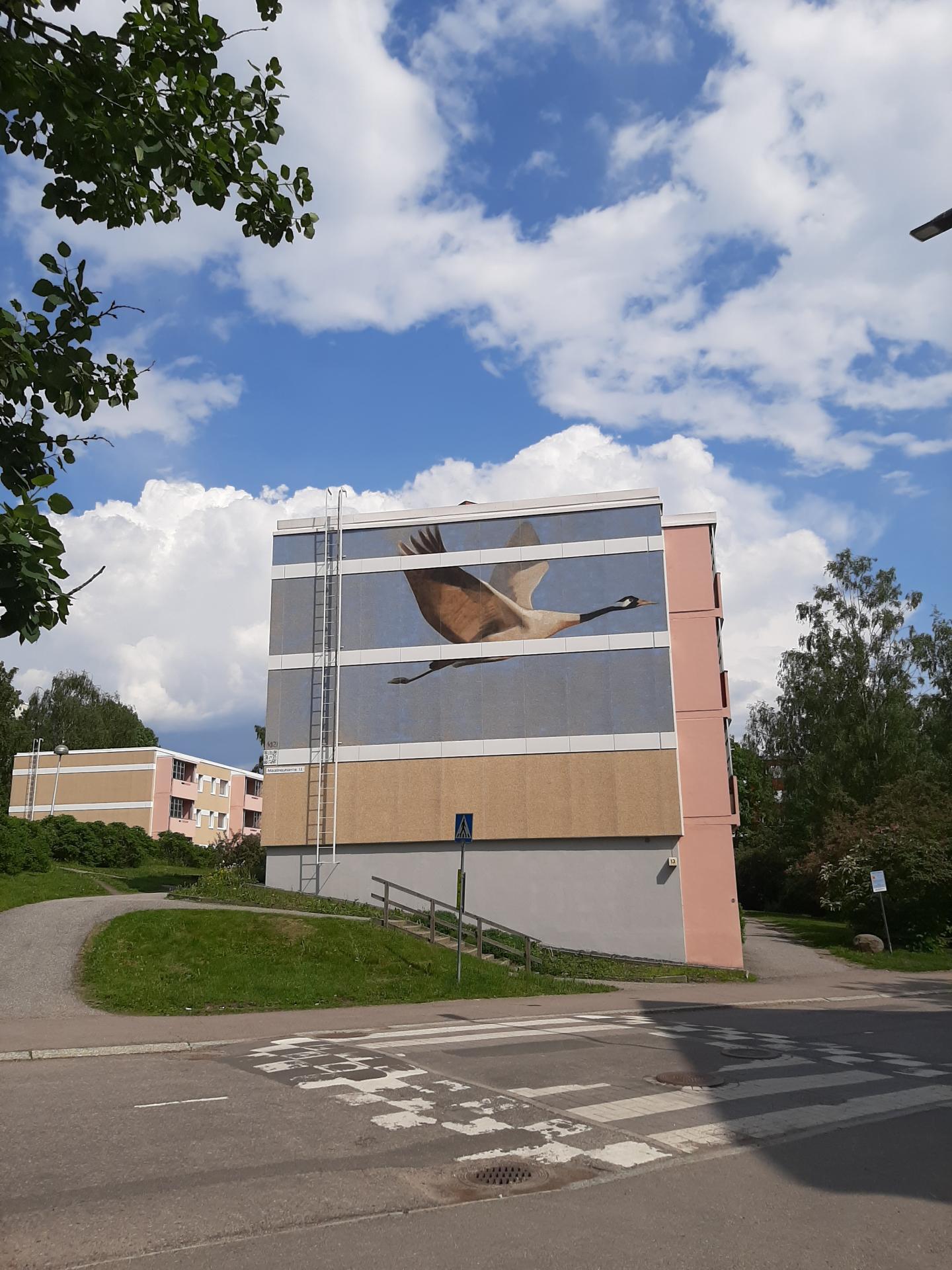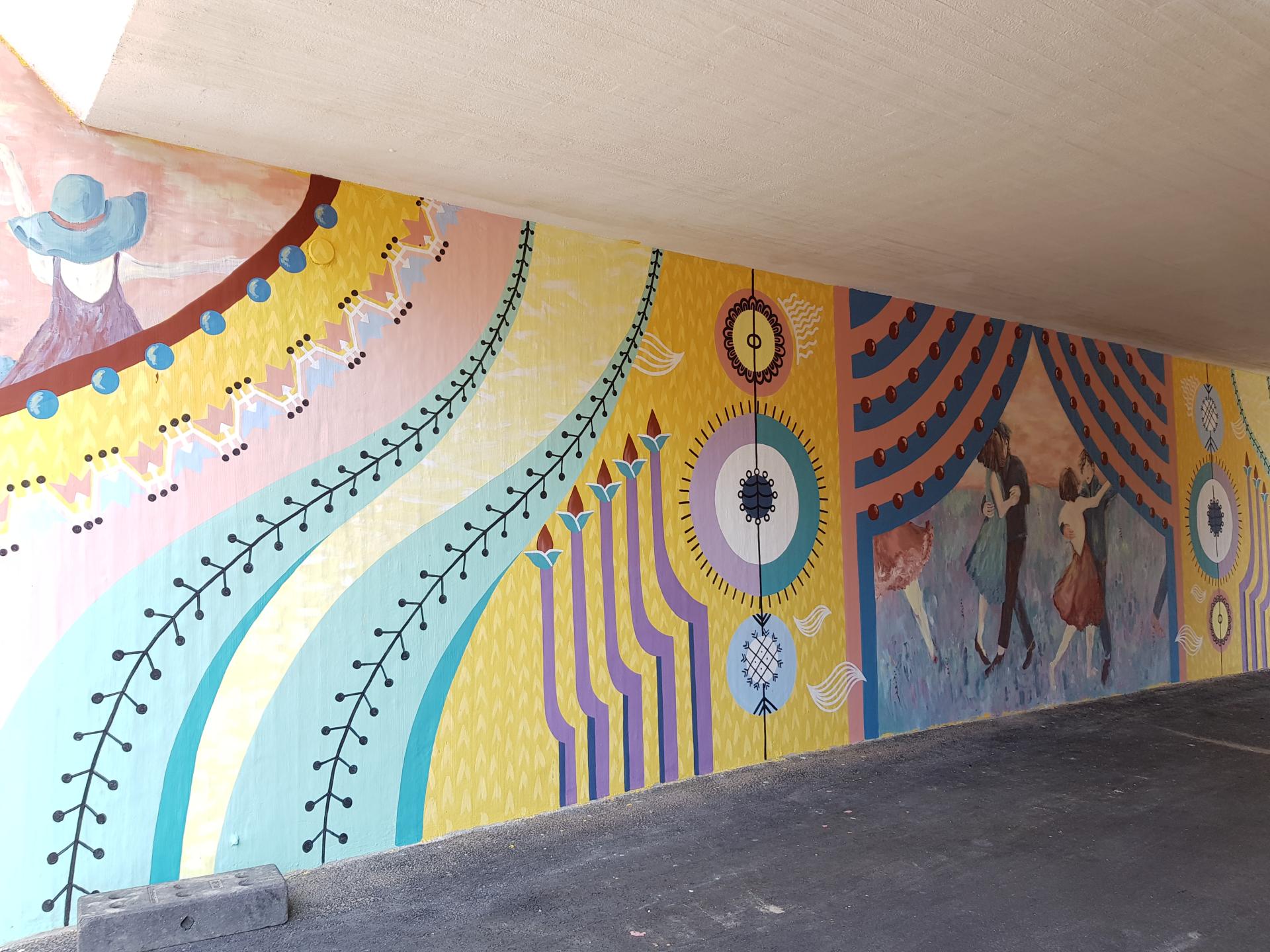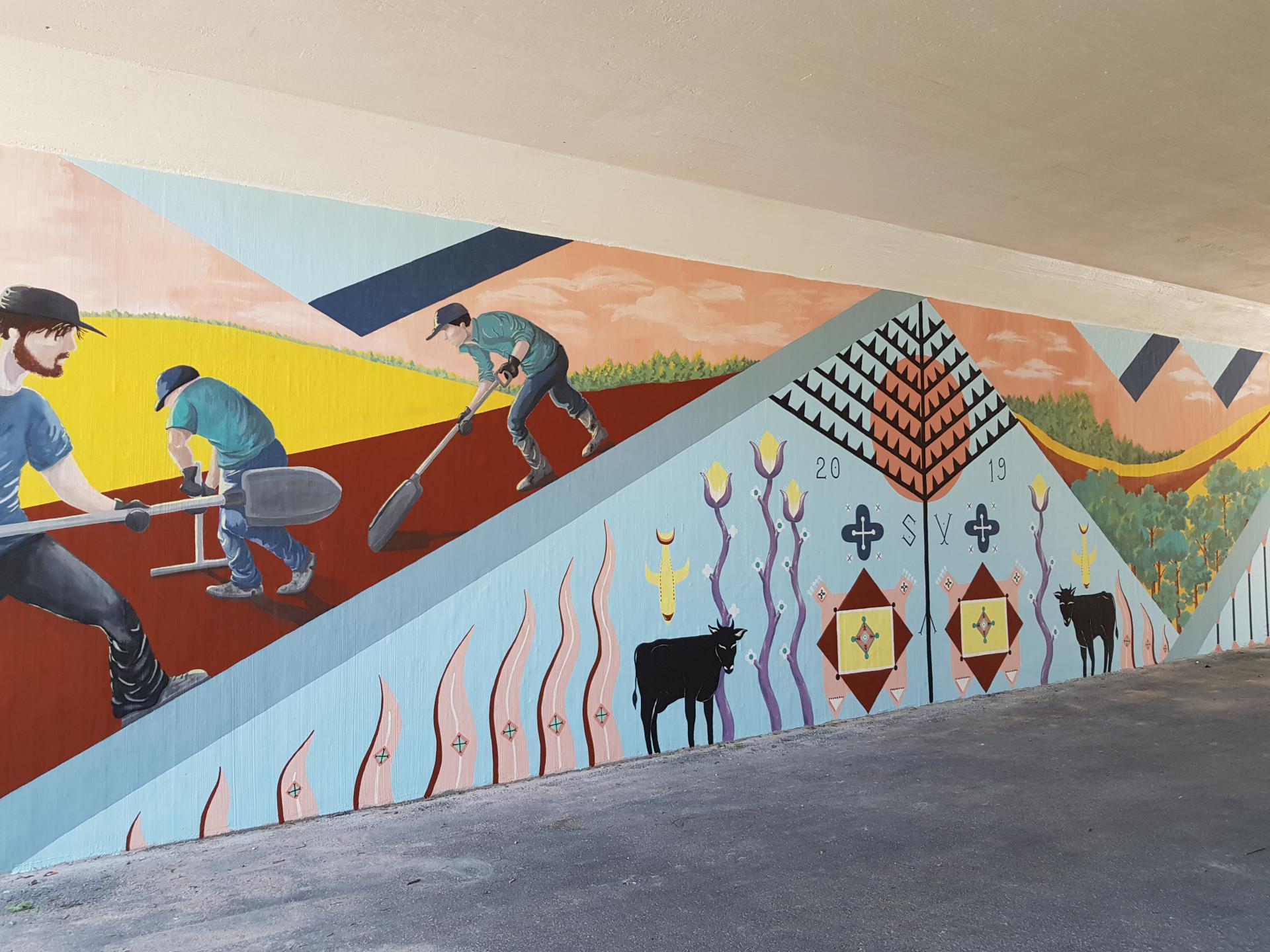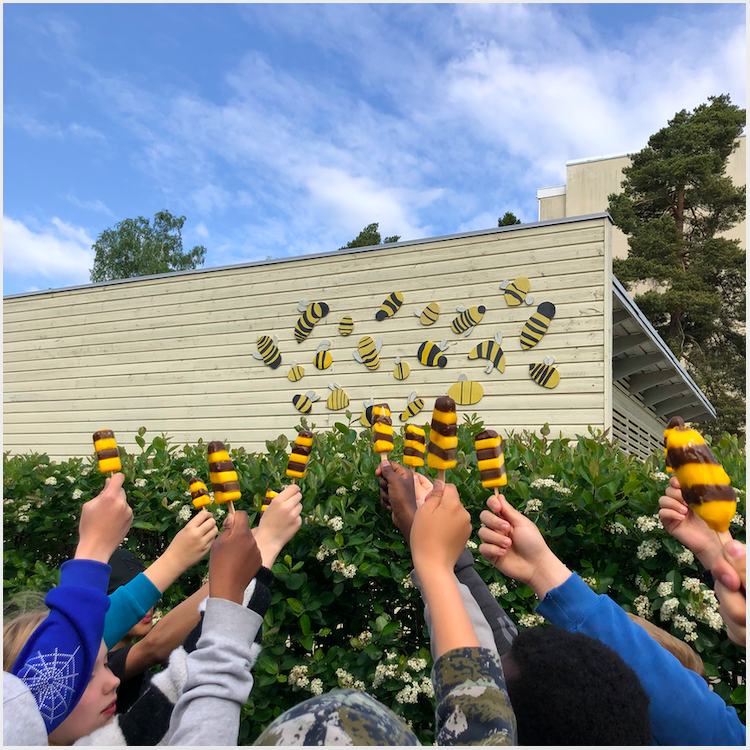Vantaa Art Routes
Basic information
Project Title
Vantaa Art Routes
Category
Regaining a sense of belonging
Project Description
We have created four art routes, that bring forth all the street art, public art and local history and culture of city districts that are otherwise left outside the spotlight of media or city communications. These are suburbs from the 70's that lack roots but offer great content to those who venture out to find it. Our art routes encourage others to visit and locals to be proud of what their suburb has to offer.
Geographical Scope
Local
Project Region
Four suburbs in the city of Vantaa: Hakunila, Länsimäki, Koivukylä-Havukoski and Martinlaakso., Finland
Urban or rural issues
Mainly urban
Physical or other transformations
It refers to other types of transformations (soft investment)
EU Programme or fund
No
Description of the project
Summary
We created four art routes in four different city districts of Vantaa, which have been recognised as areas in need of special attention and positive discrimination. We wanted to highlight the many things to see in these suburbs, which would not be normally considered as tourist destinations or interesting from the point of view of contemporary art. We attached all kinds of different visit points in the routes such as historical places and local bakeries. We hope that in the future locals could also start developing the routes themselves and use them to boost their businesses and actively create a positive image and narrative about their homes instead of the negative perspective offered by media. There is a map of each route on our website, which can be downloaded for free or followed through the website and each route is marked in situ with stickers going around the route on light poles. The routes are accessible by a weelchair and along the routes of public transportation. We have curated most of the works of art along the routes but there is also works of art by the City Art Museum and works produced by individual artists. Most of our projects have either included a local artist or are based on stories, ideas and memories of local residents. This helps to visualise local memories and life stories on our built environment.
Key objectives for sustainability
These art routes are designed for pedestrians and cyclists, they are obviously for free and all of them are accessible via public transportation which means they are accessible for everyone no matter what your income level or logistic possibilities are. These routes thus do not create emissions and anyone can download the map from our website for free or take a photo of it from the info point in each district. One does not need to download an app for it. We are also not aiming to reach a large international audience, since encouraging flying is against our values, but aim to attract people from Finland to visit these places. All this is in our point of view exemplary when it comes to sustainable traveling and creating high value content with minimal resource input. Also the possibilities around these existing routes are endless but still don't require more than running the server for the website.
Key objectives for aesthetics and quality
We have curated most of the street art pieces along the routes over the course of 10 years and they add a valuable aesthetic layer to the built environment in these districts. There are also official public art works in these districts curated by the City Art Museum which are included in the routes. The feedback we get from the residents is entirely positive and the message is that well curated street art enhances the quality of living and makes people care more about their built environment and also feel more cared for. We also maintain the art pieces so they do not become rugged, tagged or otherwise smudged over time. This means annual check-ups, cleaning and repainting in places that need it. People who have walked these routes have also reported that it makes them look at the environment more carefully and also notice a lot of natural and architectural details that they have so far otherwise overlooked. These suburbs mostly represent the most hated, gray, cheap and ugly architecture of Finland but the art routes help to see the beauty in this type of architecture and also to bring more beauty and meaning in the area. Here the cooperation with the city of Vantaa has been priceless since the City has funded most of the art works and encouraged a participatory approach in the process.
Key objectives for inclusion
As mentioned above, the routes are almost entirely accessible. The routes only follow sidewalks that are accessible with a wheelchair. However since this is a route based on seeing, it is not accessible for visually impaired people. All maps are for free and routes are accessible via public transportation. We also organise free, guided walking tours through the routes a few times a year, so people can hear all the stories behind each painting or place. On our website we have written in Finnish summaries of these stories but the tours can also be held in English.
We only include works of art that are suitable for all age groups and backgrounds, so we make sure that the works do not include racism, (sexual) violence, misogyny or any other illegal elements. We also take care of the artworks through annual cleaning and restoration if necessary, to make sure there are no racist slurs, nazi symbols or other offensive tags on the works. If the tags are somehow funny or in other ways not disturbing (such as "Timothy99 was here"), we often include them in the works by highlighting them or in other ways merging them into the artwork. This gives a possibility for the taggers to be seen and heard as well.
In the curating process we have aimed to include as many local artists as possible. As mentioned before most of the art works are inspired by stories, ideas and memories from local residents that we always send to each artist before they start working. We have organised many a party with the residents to celebrate a new painting and the whole process and given workshops in local festivities to be actively present in each city district.
We only include works of art that are suitable for all age groups and backgrounds, so we make sure that the works do not include racism, (sexual) violence, misogyny or any other illegal elements. We also take care of the artworks through annual cleaning and restoration if necessary, to make sure there are no racist slurs, nazi symbols or other offensive tags on the works. If the tags are somehow funny or in other ways not disturbing (such as "Timothy99 was here"), we often include them in the works by highlighting them or in other ways merging them into the artwork. This gives a possibility for the taggers to be seen and heard as well.
In the curating process we have aimed to include as many local artists as possible. As mentioned before most of the art works are inspired by stories, ideas and memories from local residents that we always send to each artist before they start working. We have organised many a party with the residents to celebrate a new painting and the whole process and given workshops in local festivities to be actively present in each city district.
Results in relation to category
We don’t have any measured results, numbers etc. about our project but all the feedback we have received has been excited and positive. We had an intern who only focused on these art routes and their development and in her report she highlighted what a brilliant concept this is, full of potential for the future. We are now working towards implementing her suggestions and developing the routes further with her feedback. The City of Vantaa has done marketing videos of these routes and advertised them in their social media communications. Also the demand for our free walking tours is high and the feedback from those as well has been extremely positive. We think that the combination of free access to individual experience combined with the possibility to attend a guided tour is the best option to slowly increase awareness around the routes and gain a wider, local audience. In general in this project we have wanted to maintain an approach of long-term planning instead of fast results. We hope these routes will exist for decades and be developed for decades as well. We expect to see the true fruits of our labour in maybe 10 years, not after a couple of years only. The map of Martinlaakso route will be sidplayed on our website in December 2023 since we had to make some alterations to it last minute. Anyhow the route is finished, just the map and the art work descriptions are missing from our website at the moment.
How Citizens benefit
Our activities are based on community planning and involvement, so also many of the street art pieces we have curated, have been executed using communal planning methods or some other form of participation of the local residents. The aim is always to highlight the people who live in these areas, not us or the artists only, and to make the area look like the people who live there. That is why we never wanted to just bring famous artists in each district to make a more “valuable” mural from the point of view of capitalist institutional art but to help create areas with a strong personality and visual character. Some of the locals are continuously helping us by informing about tags or repair needs and sending us ideas for future walls or projects. Locals have organized many a party for the finished paintings and have told us how much it means to have their own story visible on the wall. Children have been extremely excited to see their own story in the paintings. The city has also adopted this project in a way that the upkeep of the art pieces is part of their annual activities. Seeing the beauty in the place one lives in increases one’s sense of pride over it and hopefully helps to create a sense of belonging or at least a desire to stay.
Physical or other transformations
It refers to other types of transformations (soft investment)
Innovative character
The innovative character of our project comes from the fact that the routes are not restricted to only one theme such as public art or sculpture or street art but they aim to bring forth the unique compilation of destinations, the area as a whole and leaves room for residents to suggest whatever they find important or interesting in their own area for others to discover. The aim is not to educate people about a certain era of art or one architect but to create a possibility to experience an area with all that it has to offer within the realm of public space. They are labeled as art routes but we don’t want that label to restrict or bring any elitism in the routes so any kind of art is welcomed in these routes.
Disciplines/knowledge reflected
We have mostly been working on the fields of contemporary art and curating but our work also touches upon fields of participatory planning, community building, aesthetics, community based art, sustainable tourism, locality and building a sense of belonging. We have brought residents together in different workshops and planning events, been part of local festivities and been actively present in the local schools. While doing this we have also gathered valuable information from the residents which we have been able to pass on to local authorities. We still aim to highlight local public spaces for meeting other people and supporting local associations so that they would reach as many locals as possible and bring them together.
Methodology used
The methodology has been to walk around in these areas and identify a walking route maximum of 2 km that goes through as many of the art works in the area as possible, talk with residents, scout for walls and negotiate extra financing from private housing condominiums and corporations, market the routes and throughout the course of 5 years make art and communal projects with residents to create more and more content for the routes. We have used inclusive curating, communal planning, participatory design, given workshops in schools, youth houses and resident spaces and also made our own murals.
How stakeholders are engaged
The project was our own idea but the City of Vantaa has funded it in general and independent housing condominiums have funded individual art works. We have also managed to get funding from local businesses and Finnish art foundations. Some spots for art have been suggested by locals and all the stories behind the street art works are from the residents. We have organized numerous workshops for different age groups where participants have been able to paint themselves, tell stories, give ideas and vote for different options. We have also organized aforementioned free walking tours for all age groups.
Global challenges
Mainly we wanted to address the need to create a sense of pride within local communities about their own city districts and built environment. We wanted to turn the audiences gaze to all the positive sides of each area and create a reason for outsiders to visit these often neglected and forgotten areas. These are not the places one would think of first when planning a day trip but these routes give anyone a reason to visit. This also addresses the dire need to focus on traveling near. We cannot continue subsidizing flying and encouraging people to fly around the world but to start discovering all the interesting things scattered right outside our doorsteps. Also a sense of belonging is definitely something we need to build through positive narratives and change of perspective when it comes to suburbs.
Learning transferred to other parties
These routes are easy to execute wherever in this world and one can see from our website what elements are needed to create art or just walking routes that reflect the specific nature of each location. The possibilities are endless.
Keywords
Street art
Sustainable tourism
Suburban pride
Visualisation of memories
Changing the narrative

